I’ve never publicly shared why I shut down Seedscout. Did revenue go to zero? Did I lose faith in the idea? Did I just get bored? Unfortunately for me, and fortunately for you, the answer is much more entertaining than that. In this post, I’m going to unpack the decision that led to the eventual death of Seedscout, and why I don’t regret anything.
To understand Seedscout, you have to understand what we were trying to build. I considered Seedscout to be a social capital bank. I seeded it with my reputation and brand. Founders paid to borrow that reputation, and when they raised money because of Seedscout, we celebrated it publicly, which deposited far more social capital than they ever withdrew. That was the loop. Without social capital, investors didn’t care about us. And if investors didn’t care, founders didn’t either. We were a bank, and like any bank, we had to manage our balance carefully.
I wasn’t the only “social capital bank” in town. While running Seedscout, we were competing with players like On Deck. They had all the status in the world. They were the JP Morgan of social capital (of that era). I was the locally owned bank. Erik Torenberg had Silicon Valley fully behind On Deck.
Seedscout, by comparison, was the quirky cousin. It was working, but not fast enough. I needed investors to join faster. I needed the brand to grow faster. I needed to compete. I wanted Seedscout to be seen as high status, something people aspired to be part of.
In early 2022, I tried some experiments to increase status and attract more investors. I rented mansions for founder retreats. I hosted AMAs with tech legends. Some of it worked. We were still growing on the founder side. But we had already raised capital, our runway was shortening, and we were more than two years into the grind. I knew I needed to do something different to spark a new wave of investor interest. I started thinking: what does a major deposit into our social capital bank look like? What would give us the status boost we needed?
Seedscout’s business was to create status, lend it to founders, and earn it back when they built successful companies. But we needed a more reliable and consistent way to create that status from nothing. We had case studies in motion, but it wasn’t enough.
One day, I had an idea and filled out an interest form for the Phoenix Suns. The Suns were hot at the time, and I thought maybe I could use a game to increase our balance in the social capital bank. A rep got in touch with me and sold me four upper-deck seats. I thought they could act like status tokens. I would invite people, we would build relationships, and Seedscout would look like a brand worth knowing.
But upper-deck seats didn’t feel exclusive, so I looked at lower-deck seats. Still not enough. They didn’t make a statement.
I needed something that would make a VC want to pay attention to Seedscout simply because it existed. Eventually, I found it: the most expensive club in the arena. Each seat cost $28,000 per year. I got four of them. Dead center. Private entrance. Buffet. Open bar. It was elite. It was bougie. It was a meaningful deposit into the social capital bank.
If you got invited, you felt like Seedscout mattered. That was the goal. At the time, Seedscout was doing really well. Growth was parabolic. Founders were joining like crazy, even though investor growth was static. We were bringing in over $18,000 a month. Investors were still cutting checks into the company. From my perspective, this wasn’t even a risky move. I thought we were just getting started. What I didn’t realize was that the market was already collapsing beneath us at the later stages. It just hadn’t hit pre-seed yet.
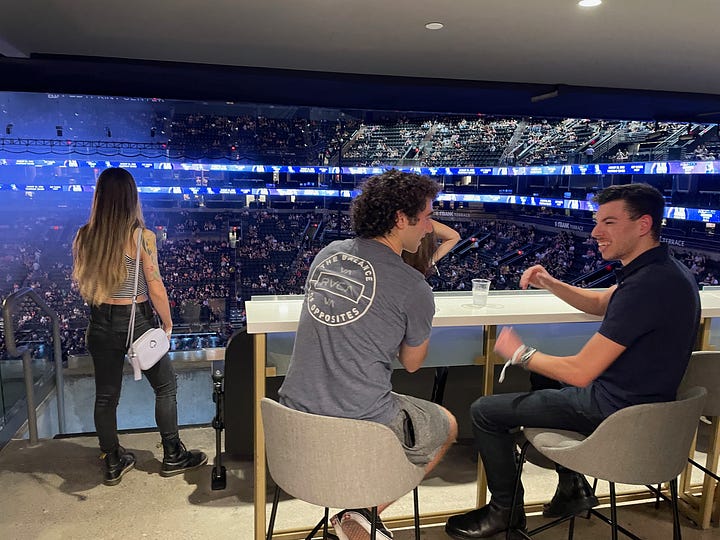
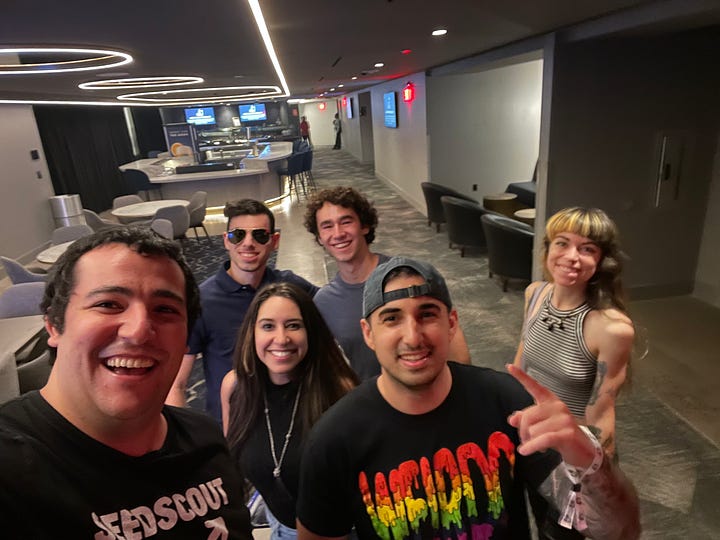
By July 2022, the NBA season hadn’t started, but concert season was going strong. The first event we attended in those seats was WWE Raw. Then came Machine Gun Kelly. During one of those events, someone I had invited said something that hit me hard: “This is cool… but it’d be sick if we had a whole suite.”
That crushed me. This was supposed to be the coolest experience of their month, something they’d associate with Seedscout. Instead, they were thinking about how much cooler it could be. I started wondering if I was about to spend $10K a month for a year and still fall short of my goal.
So I went all in on something… crazy.
Within two weeks, I upgraded. A fourteen-person corner suite. Seedscout logo on the wall. It was ours. Once we had it, the game changed. I started by inviting friends. Then I invited important strangers I wanted to get to know. Everyone said yes. Founders started joining Seedscout just to get access to the suite.
We charged $1K a month for founders to join, and I should have charged more. Investors I had never met showed up and schmoozed with me. Howard Lindzon (Robinhood seed VC) came and brought a well-known real estate mogul. I spent the evening with both of them, in my suite.
Top-tier tech execs came to multiple events. Out-of-town investors flew in just to check it out. People asked for favors to get their friends in. For a brief moment, the Seedscout suite was the hottest offline experience in the ecosystem. And the crazy part? It worked. I didn’t change the brand. I didn’t change the product. But Seedscout’s social capital balance soared.
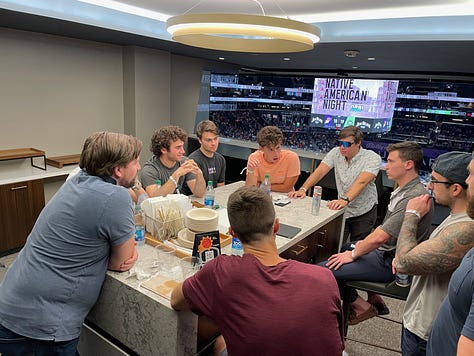
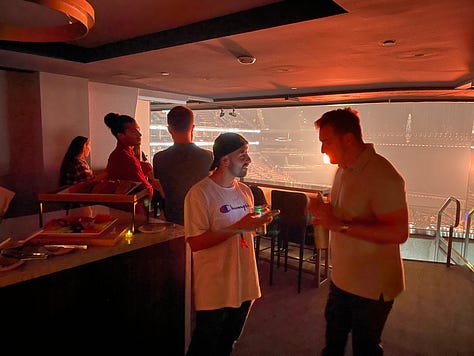
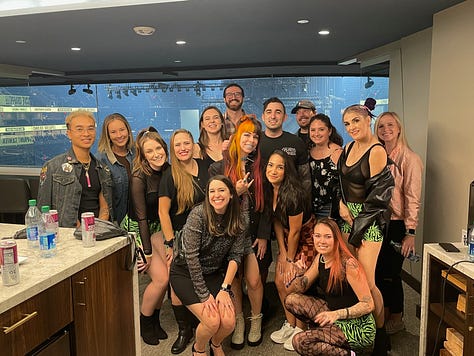
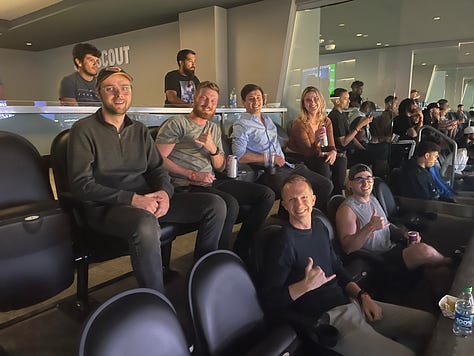
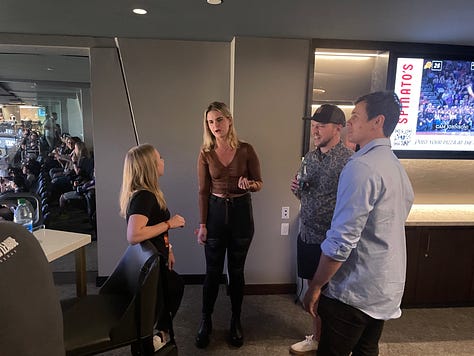

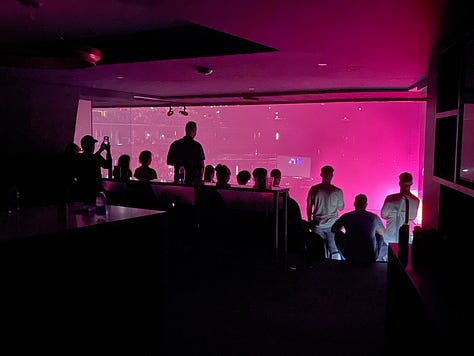
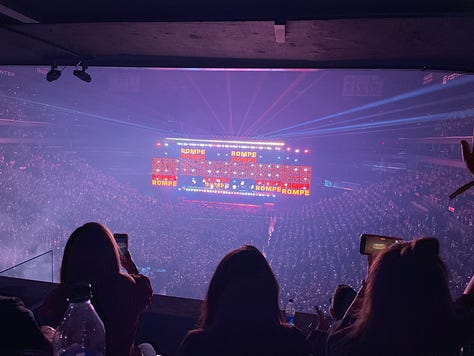
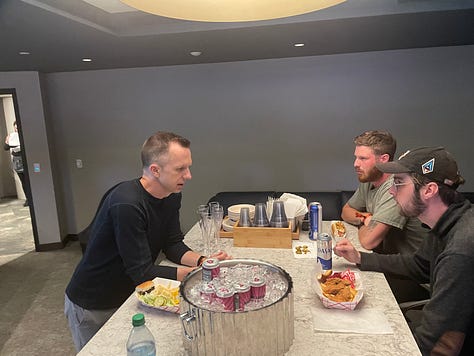
People who used to ignore me now wanted to be around. In a relationship-driven industry like startups, that shift changed everything. I used those new connections to help founders, make intros, and build real value inside the Seedscout network.
How do I know the suite strategy worked? Because just a few months later, in Q4 2022, the tech crash hit pre-seed hard. Seventy-five percent of our founders churned within a two-month period because their funding plans changed. Investor interest dried up for them and for us. The money stopped flowing. But that suite payment was still due.
Soon after, it hit me like a brick. This was over. I realized I had to act fast to maintain good faith. I called my Suns rep and told him I couldn’t make the payment. Within days, access was frozen. I never stepped foot in the Seedscout suite again.
After that, many of the relationships that had formed around the suite faded. Some of the people I was connecting with disappeared. The Seedscout social capital bank had lost a massive deposit, and I think people could feel it. I didn’t take it personally. If all someone knew me for was the suite, and the suite was gone, then what was left? Some people would call that cold. I think it was proof the suite worked. It created gravity. It pulled interesting people into our orbit. It changed the perception of Seedscout instantly. And when it disappeared, so did the effect. Things went back to how they were before.
You might wonder how I justified the whole thing. The truth is that I am the world’s foremost nerd in this weird niche I chose to build in. In a world powered by social capital, I didn’t just need more content, more code, or more events. I needed a social capital engineer. It just wasn’t a person. It was a suite. The suite created energy. The suite created credibility. The suite created status. And when it disappeared, so did the capital. That’s how I know I made the right call, maybe just at the wrong time.
Also, let’s be real. My investors didn’t back me to build an $18K-a-month lifestyle business. They backed me to take the whole market. By the middle of 2022, I had been grinding for two and a half years. My competitors were much farther ahead of us. I was running out of moves. I needed to try something. In the grand scheme of startup costs, a suite was not a crazy bet. Many startups spend $600K+ a year on engineers just to ship an MVP. I just needed one bet to pay off. One lever to pull.
In the months after losing the suite, they told us we still owed the full first year’s payment. Six figures of debt, plopped into Seedscout’s lap. I tried to raise more money, but no one wanted to invest knowing we had this type of debt. The market came to a halt, and no new founder wanted to pay a cent for anything. It was a really dark time for me. This is an email update I shared with my investors in January of 2023.
We were able to keep Seedscout going for almost two years after that email was sent, even pulling off a full pivot with all the energy in the world behind it, called IntroFlow. We were trying to make something happen. But at the end of the day, the debt weighed us down. We couldn’t shake it, despite my efforts and multiple conversations with the Suns.
During this time, I had a son. That changed everything. Eventually, I had to make a decision. The Suns weren’t forgiving the debt. I had a family to provide for. I had to let Seedscout go—for them, for my investors, and for myself. So I did.
Now you know the full story. This chapter of my life crushed me for a period of time, but I have gotten back up with a pep in my step. At the end of the day, what doesn’t kill you…..







